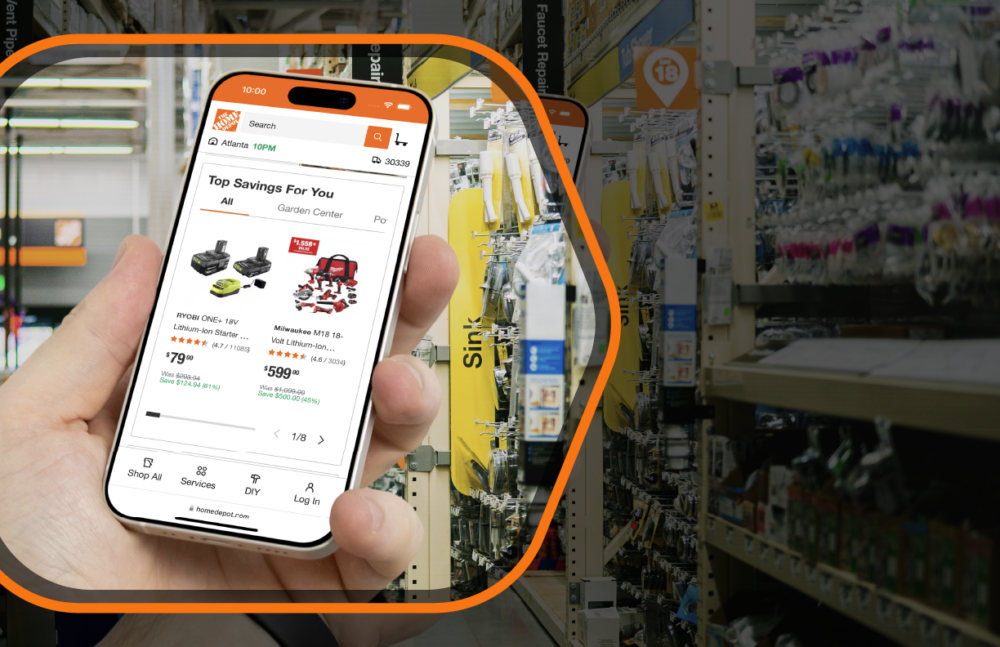
In the ever-evolving landscape of customer experience, hyper-personalization is emerging as a game-changer for the home improvement industry. By leveraging advanced data analytics, artificial intelligence (AI) and real-time insights, hyper-personalization enables brands to deliver tailored experiences that resonate deeply with individual customers. For home improvement retailers and manufacturers, adopting hyper-personalization is no longer optional – it’s essential for staying competitive in a customer-driven market.
Here’s how hyper-personalization is transforming the customer experience in the home improvement industry.
What Is Hyper-Personalization?
Hyper-personalization takes traditional personalization to the next level by using cutting-edge technologies like AI and machine learning to analyze data and predict customer behaviors. It’s not just about addressing customers by name; it’s about understanding their preferences, habits and pain points to create highly customized experiences across all touch points.
For example, a home improvement retailer can recommend specific tools or materials based on a customer’s previous purchases, search history or even local weather conditions instead of sending a general promotion.
Benefits of Hyper-Personalization in Home Improvement
Hyper-personalization offers numerous benefits for both customers and brands:
- Enhanced Customer Satisfaction: By delivering relevant and timely recommendations, brands can improve customer satisfaction and loyalty.
- Higher Conversion Rates: Personalized recommendations and offers are more likely to convert browsers into buyers.
- Efficient Marketing Spend: Targeting customers with tailored campaigns ensures a higher return on investment for marketing efforts.
- Stronger Brand Loyalty: Customers are more likely to return to brands that understand their needs and preferences.
Practical Applications in the Home Improvement Industry
The home improvement industry offers unique opportunities to leverage hyper-personalization. Here’s how:
- Customized Project Recommendations: Imagine a customer browsing for kitchen remodeling ideas. Based on their online behavior, a retailer could recommend specific products, design layouts or even how-to guides tailored to their preferences.
- Proactive Support: AI-driven tools can predict when a customer might need assistance, offering proactive support such as live chat suggestions or timely follow-up emails.
- Dynamic Pricing and Promotions: Brands can offer personalized discounts or promotions based on customer behavior, past purchases or seasonal trends.
- Personalized In-Store Experiences: Digital tools can enhance customers’ experiences visiting brick-and-mortar locations. For example, mobile apps can provide personalized shopping lists or augmented reality (AR) features to visualize a product’s appearance in their home.
How to Implement Hyper-Personalization
Implementing hyper-personalization requires a strategic approach. Here are the steps:
- Collect and Analyze Data: Start by gathering customer data from various sources, including online behavior, purchase history and demographic information. Use analytics tools to identify patterns and insights.
- Leverage Technology: Invest in AI and machine learning platforms to process data and deliver actionable insights. These tools enable real-time personalization across multiple channels.
- Integrate Across Touch Points: Ensure that personalization efforts are consistent across all customer touch points, from websites and mobile apps to email campaigns and in-store experiences.
- Prioritize Privacy and Transparency: Customers are increasingly concerned about data privacy. Be transparent about how data is used and ensure compliance with privacy regulations.
The Future of Hyper-Personalization in Home Improvement
As technology continues to advance, hyper-personalization will become even more sophisticated. Innovations like predictive analytics, voice assistants, and AR/VR will enable brands to create immersive and intuitive experiences.
For instance, a customer could use a voice assistant to describe a project idea, and an AI-driven platform could instantly recommend materials, tools and step-by-step guides. Similarly, AR/VR could allow customers to virtually design and visualize their projects before purchasing.
Conclusion: The Power of Hyper-Personalization
Hyper-personalization is redefining how home improvement brands connect with their customers. By delivering relevant, timely and highly customized experiences, brands can foster deeper relationships, drive conversions and stand out in a competitive market. For those in the home improvement industry, the time to embrace hyper-personalization is now. Adapting to this transformative trend will not only enhance customer satisfaction, but also position your brand as a leader in the market.